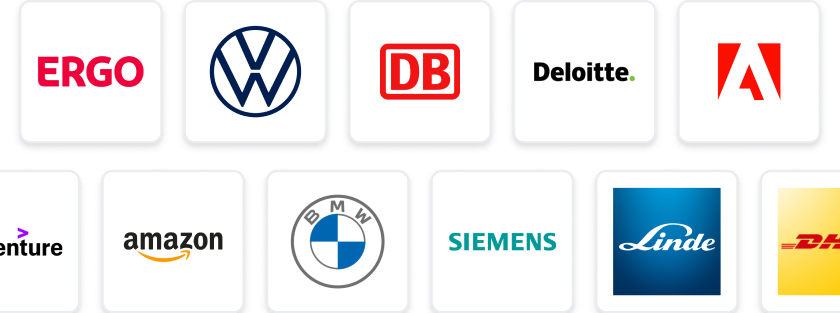At a Glance
- Tasks: Develop embedded firmware and design edge software for smart factory diagnostics.
- Company: Join a leading innovator in industrial IoT and automation based in Sheffield.
- Benefits: Enjoy hybrid work options and the chance to work on cutting-edge technology.
- Why this job: Be part of a team transforming manufacturing with impactful, real-time solutions.
- Qualifications: Strong experience in ARM Cortex programming and real-time signal processing required.
- Other info: Bonus skills include cloud integration and cybersecurity knowledge.
The predicted salary is between 36000 - 60000 £ per year.
Location: Hybrid – Sheffield, United Kingdom
Industry: Industrial IoT, Automation, Condition Monitoring
As an Embedded Software Engineer, you’ll play a key role in developing edge software for machine diagnostics and predictive maintenance that keeps factories smarter, safer, and running without interruption. This is a hybrid role based in Sheffield, a city at the heart of UK manufacturing innovation and digital industrial transformation.
What You’ll Do:
- Develop embedded firmware in C/C++ for ARM Cortex-M and Cortex-R microcontrollers
- Design and implement edge-side software for vibration, temperature, and motor current diagnostics
- Work on real-time sensor data acquisition, signal processing, and diagnostic feature extraction
- Integrate algorithms for predictive maintenance, fault detection, and anomaly recognition
- Interface with industrial communication protocols (e.g. Modbus, CAN, OPC UA, EtherCAT)
- Collaborate with hardware engineers and data teams to deploy robust, field-ready systems
What You Bring:
- Strong experience in embedded systems programming for ARM Cortex-based microcontrollers
- Deep understanding of RTOS, interrupt handling, and low-level firmware architecture
- Experience working with industrial sensors and real-time signal processing (FFT, filters, envelope detection)
- Familiarity with diagnostic systems, machine condition monitoring, or vibration analysis
- Comfort working with oscilloscopes, logic analyzers, and low-level debug tools
Bonus Skills:
- Knowledge of predictive maintenance frameworks, ISO 10816 or ISO 13373 standards
- Integration with cloud or edge analytics platforms (AWS IoT, Azure IoT, or on-prem gateways)
- Scripting in Python or MATLAB for prototyping or validation
- Exposure to cybersecurity for industrial systems (secure boot, firmware signing)
Embedded Software Engineer employer: XpertDirect
Contact Detail:
XpertDirect Recruiting Team
StudySmarter Expert Advice 🤫
We think this is how you could land Embedded Software Engineer
✨Tip Number 1
Familiarise yourself with the specific ARM Cortex microcontrollers mentioned in the job description. Understanding their architecture and capabilities will help you demonstrate your expertise during interviews.
✨Tip Number 2
Brush up on your knowledge of industrial communication protocols like Modbus and CAN. Being able to discuss how you've used these protocols in past projects can set you apart from other candidates.
✨Tip Number 3
Prepare to showcase any hands-on experience you have with real-time signal processing and diagnostic systems. Be ready to discuss specific projects where you've implemented these skills, as practical examples can make a strong impression.
✨Tip Number 4
If you have experience with predictive maintenance frameworks or standards like ISO 10816, be sure to highlight this. It shows that you understand the industry's best practices and can contribute to the company's goals right away.
We think you need these skills to ace Embedded Software Engineer
Some tips for your application 🫡
Tailor Your CV: Make sure your CV highlights your experience with embedded systems programming, particularly with ARM Cortex microcontrollers. Include specific projects or roles that demonstrate your skills in real-time signal processing and industrial automation.
Craft a Compelling Cover Letter: In your cover letter, express your passion for industrial IoT and predictive maintenance. Mention how your background aligns with the job requirements and provide examples of your work with diagnostic systems and communication protocols.
Showcase Relevant Skills: When detailing your skills, emphasise your familiarity with RTOS, low-level firmware architecture, and any experience with tools like oscilloscopes and logic analyzers. Highlight any bonus skills such as knowledge of predictive maintenance frameworks or cloud integration.
Proofread and Format: Before submitting your application, ensure that your documents are free from errors and formatted professionally. A well-organised application reflects attention to detail, which is crucial for an Embedded Software Engineer.
How to prepare for a job interview at XpertDirect
✨Showcase Your Technical Skills
Be prepared to discuss your experience with embedded systems programming, particularly with ARM Cortex microcontrollers. Highlight specific projects where you've developed firmware in C/C++ and any relevant algorithms you've implemented for predictive maintenance.
✨Demonstrate Problem-Solving Abilities
Expect technical questions that assess your problem-solving skills. Prepare to explain how you approach real-time sensor data acquisition and signal processing, and be ready to discuss any challenges you've faced and how you overcame them.
✨Familiarise Yourself with Industrial Protocols
Since the role involves interfacing with industrial communication protocols like Modbus and CAN, brush up on these technologies. Be ready to discuss how you've integrated such protocols in past projects and the impact it had on system performance.
✨Prepare for Collaboration Questions
Collaboration is key in this role, so think of examples where you've worked closely with hardware engineers or data teams. Be ready to discuss how you communicate technical concepts to non-technical team members and how you ensure successful project outcomes.
